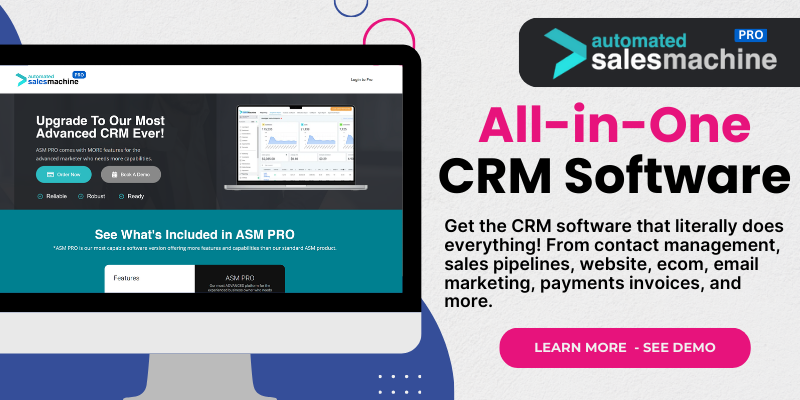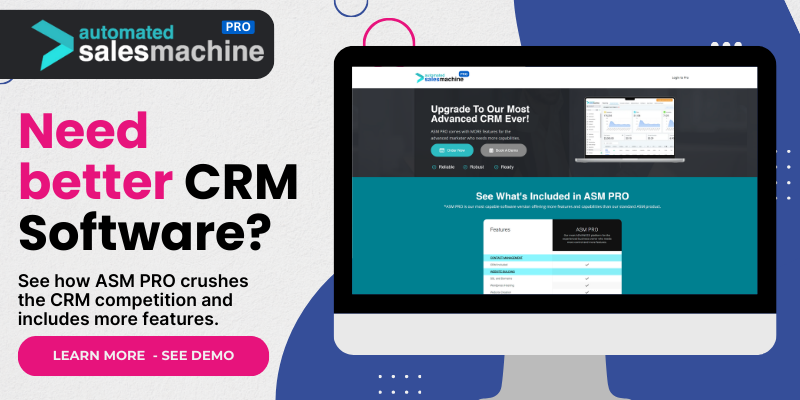Salesforce
Comprehensive Features
In my experience, Salesforce stands out because of its comprehensive range of features. You’ve got sales forecasting, customer insights, and a robust reporting engine all in one place. This means you can see your sales pipeline at a glance, which is super helpful for decision-making.
What really impresses me is how customizable it is. You can tweak everything from dashboards to the types of reports you generate. This caters to businesses of all sizes, from startups to large enterprises. You can set it up to match your specific workflows.
Not to mention, the integration capabilities are top-notch. Whether you want to connect with Mailchimp, Google Workspace, or hundreds of other services, Salesforce makes it easy. This extensibility helps you keep all your data functioning seamlessly.
User-Friendly Interface
Despite being packed with features, I found Salesforce surprisingly user-friendly. The layout is clean, and the navigation makes sense. You don’t need to be a tech whiz to find what you’re looking for—everything is where you’d expect it.
The training resources available are also a huge plus. They provide loads of tutorials and documentation, plus a vibrant online community you can tap into if you’re feeling stuck. This support system can make all the difference when getting started.
Additionally, the mobile app is delightful to use. It allows you to manage your sales activities on the go, which is crucial for people like me who are always out and about. I’ve relied on it during client meetings more times than I can count!
Pricing Flexibility
Pricing can be a sticking point for many, but Salesforce offers various plans to fit different budgets. From the basic essentials to the advanced features, there’s likely something that suits your business. You can upgrade or downgrade as your needs evolve, which is a real game-changer.
Moreover, I appreciate that you can add additional functionality as your team grows, rather than being locked into a single plan. This flexibility means you won’t outgrow the platform anytime soon, which is something I look for when choosing CRM software.
Lastly, keep an eye out for promotions or discounts for small businesses! They frequently run offers that can lower your initial costs. It pays to stay informed about what’s available.
HubSpot
Free Tier Available
Now, let’s chat about HubSpot. One of the first things that drew me to it is the free tier. Yeah, you heard me right! You can access basic CRM functions without spending a dime, which is perfect for startups and small teams just getting the ball rolling.
Even in its basic form, you can manage your contacts, track deals, and get basic reporting tools. It’s like getting a taste of what you can achieve without any financial commitment, and I always recommend trying it out!
As your business grows, HubSpot makes it easy to scale up to paid plans. They offer numerous additional features to help you with marketing, sales, and customer service as you require them, making the transition smooth if you choose to upgrade.
Intuitive Marketing Tools
In my time using HubSpot, I can’t stress enough how intuitive their marketing tools are. You’ll find email marketing, social media management, and even a content management system bundled together. This helps streamline your marketing efforts in a way that feels cohesive.
Creating landing pages and forms is a breeze. Their editor is user-friendly, and you can track the performance of your campaigns all in one dashboard. This holistic approach helped me save hours of work and got my campaigns up and running faster.
You can also segment your audience easily and set up workflows that target specific groups. This personalized approach significantly boosts your chances of converting leads into loyal customers, a strategy I swear by!
Active Community
One of the aspects that I’ve really enjoyed with HubSpot is its active community. There are tons of forums, webinars, and even local meetups where you can learn from others and share experiences. This sense of community can really kick your learning curve into high gear.
Additionally, HubSpot’s academy offers amazing courses that can help you hone your marketing skills. Whether you’re a beginner or someone with a few marketing tricks up their sleeve, you’ll find valuable content that’ll help take your game to the next level.
The networking opportunities are also invaluable. Connecting with like-minded individuals has not only aided my growth but has opened doors for potential collaborations too. You never know what will come from a simple chat at a HubSpot event!
Zoho CRM
Cost-Effective Solution
Next up is Zoho CRM, which is fantastic for businesses on a budget. I came across it when I was looking for affordable yet powerful software. Zoho packs in a ton of features without breaking the bank, making it a go-to choice for many small and medium businesses.
The pricing structure is straightforward and transparent. It’s clear how much you’re paying for each feature, and you get excellent value for what you’re spending. They even offer a free version for those starting out, which can really help when money is tight.
Moreover, as your team expands, Zoho scales with you. You can access extra features and integrations as you grow, meaning you won’t have to switch to another platform down the line.
Customization and Integration
One of the standout aspects of Zoho for me has been its customization capabilities. You can tailor everything from the dashboard to different fields for your leads, allowing you to create a CRM that really fits your business goals.
You also get integration options with various applications, like Google Suite, Mailchimp, and others. This seamless connectivity makes it a cinch to keep all your tools and data in sync, avoiding the dreaded inputting info twice.
This flexibility has allowed me to craft workflows that align perfectly with how my business operates, ultimately driving better results.
Automated Workflows
Automation is crucial for efficiency in today’s busy world. Zoho CRM has powerful automation tools to manage repetitive tasks. For instance, you can set up lead scoring and notifications, so nothing slips through the cracks.
I’ve found that automating follow-up emails and task assignments saves me a ton of time. It ensures that my team can focus on closing deals rather than getting bogged down in administrative tasks.
Plus, you can easily track and analyze these automated processes over time. This has helped me continually optimize my workflow, ensuring we’re always improving and getting the most out of our software.
Pipedrive
Sales-Focused Approach
Pipedrive is another CRM that I’ve fallen in love with due to its sales-centric approach. It helps you visualize your sales process with customizable pipelines. You can drag and drop deals through different stages, which adds a fun touch to tracking progress.
With Pipedrive, I found it easy to identify bottlenecks. The reporting tools highlight where deals are getting stuck, allowing me to make data-driven decisions about where to focus efforts and improve outcomes.
This focus on sales makes it an excellent choice for teams whose primary goal is to close deals effectively. The features are all designed around that objective, minimizing distractions from unnecessary fluff.
User Experience
The user interface is clean and simple. Everything is accessible, which is great since I’ve used CRMs in the past that felt cluttered or overwhelming. With Pipedrive, I could train my team quickly, getting everyone on board and using it almost immediately.
I love the mobile app too; it’s just as user-friendly as the desktop site. Being able to manage sales on-the-go has been a lifesaver during client meetings when I need to access information right away.
Pipedrive is super reliable, and I haven’t had any glitches or downtime. Smooth software is a must-have for anyone working in fast-paced environments!
Affordable Plans
Lastly, Pipedrive’s pricing is very reasonable for the value it provides. They offer different tiers based on your needs, but you’ll find that even the entry-level tier has all the essential tools to set you up for success.
They also offer a free trial, which I took advantage of to see if it matched my needs before deciding to commit. This willingness to let potential customers test out the software speaks volumes about their confidence in the product.
As your business scales, you can easily upgrade to access more features. This model made my decision easier, knowing that I wouldn’t have to switch platforms again later.
Microsoft Dynamics 365
Integration with Other Microsoft Products
Lastly, let’s not forget about Microsoft Dynamics 365. If you’re already using Microsoft products like Office 365 or Teams, the integration is a major advantage. It works seamlessly with these tools, making data sharing and collaboration effortless.
Using Dynamics 365, it felt like I was consolidating my software ecosystem. Having everything together maximizes efficiency. There’s no more switching back and forth between different platforms for reports!
This extends to customer service, project management, and even supply chain operations, giving you a 360-degree view of your business operations—all while keeping it all within the Microsoft family!
Advanced Analytics
Another standout feature is the advanced analytics and reporting capabilities. I’ve always believed that data-driven decisions are the way to go, and Dynamics 365 has built-in tools to help you analyze your performance effectively.
You can easily customize reports and dashboards to get insights into your sales funnel, customer interactions, and overall business health. This level of visibility has helped me refine strategies and improve outcomes continuously.
Plus, they even utilize AI to offer predictive analytics, which is a real game-changer. Understanding where the market is heading can help you pivot strategies proactively instead of reactively.
Customization and Scalability
Customization options in Microsoft Dynamics 365 have been a lifesaver for me. You can tailor the system according to your specific needs, creating a CRM that genuinely reflects your business processes.
Scalability is another huge plus. As you grow, it’s easy to add more functionality and upgrade plans to fit your evolving requirements. This is particularly crucial to businesses that anticipate rapid growth.
Overall, I feel secure committing to Dynamics 365 because I know it can evolve alongside my business needs, whether that’s adding more users or features as my requirements change over time.
FAQ
What is a CRM software?
A CRM (Customer Relationship Management) software is a tool that helps businesses manage their interactions with customers and prospects. It often includes features for sales tracking, customer support, and marketing efforts.
Why should I use a CRM?
Using a CRM can streamline your sales processes, enhance customer relationships, and improve data organization. It allows you to manage interactions more effectively and can lead to increased sales and customer satisfaction.
Are all CRM platforms expensive?
Not necessarily! There are several CRM platforms available at various price points, including free options. It’s all about finding the one that fits your budget and meets your business needs.
Can small businesses benefit from using CRM?
Absolutely! In fact, many CRM tools are designed specifically for small businesses. They can help streamline operations and create a much more organized approach to customer management.
Which CRM is best for sales teams?
It really depends on your specific needs, but Salesforce and Pipedrive are both highly recommended for sales teams due to their focused features on sales processes and pipeline management.

